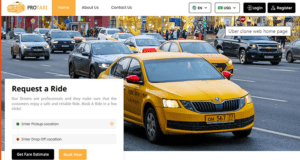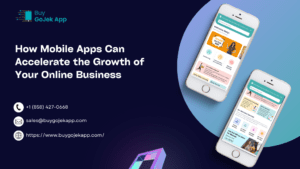
Building a complex app often takes a heavy load on most white-label firms. There are countless decisions to be made every day, such as naming your app, who to hire, and, most importantly, when to launch the MVP. If you are dealing with the same issues, you must go through this blog to find answers to such questions.
Introduction
Launching an app without any engaging features yields no results. On the other hand, developing a feature-loaded app full of interfaces and services will likely prevent its launch (draining your bank account in the process). Thoughts like this keep many entrepreneurs awake at night, striking fear in the most experienced ones as well.
Saving Businesses One App At A Time
Due to the massive volume of releases, a new app often has one fleeting chance of success. That is why there’s an MVP that does the initial work for you without making your pocket lighter. Every investor wants a minimally viable product before the actual full-fledged app so they can test the winds of the market without spending enormous sums of money. Therefore, to get a successful MVP out, you must have an innate understanding of the core features of your app.
Easily Detachable
For many entrepreneurs, it is hard to detach from the final app vision. Sadly, making an app without proper planning insights is a blunder that is often unrecoverable. However, this is not the case for a genuine minimal viable product—a stripped-down minimalized version of an app ready to face failure to create a better version altogether.
That is why most MVPs don’t resemble the final app. It is merely a test product to see whether people are interested in it. If yes, why don’t you add some features and turn that solution into an app?
Not Minimal Per Se
Entrepreneurs often need to make a stripped-down, four-feature version of their apps to get an MVP. Without adding additional features, a minimally viable product is only minimal in that it completes the project’s purpose. It is not a version with a bunch of features disabled. That is why most entrepreneurs follow popular apps to create a similar product that has already been tried and tested.
Furthermore, you won’t just add the missing features if you start making the changes. Still, you’ll also implement the overall user feedback you have received by releasing the MVP. Simply put, it will be a complete rewrite and redesign, solving your customers’ core problems.
The Case of Uber
In 2009, Uber started as an MVP named “UberCab.” At the time, the founders wanted to test if there was a demand for SMS or call-based ride-hailing services. Initially, UberCab had an invitation-only service for New York and San Francisco residents to keep the number of users manageable. Here, booking a ride was the only service Ubercab provided, with only a few cars in its fleet.
The thought process was: the MVP would dispatch the nearest cab after the rider’s location was specified via GPS. The MVP simply validated the idea, giving valuable feedback that enabled the founders to iterate their app into what is now known as Uber. Using the MVP as a foundation, they slowly introduced more features as the company grew and the user base expanded, such as:
- fare estimation/splitting
- in-app tracking
- live-tracking of drivers
- automatic credit card payments
Uber is the perfect example of a single-feature MVP. It re-introduced the ride-hailing concept that separated itself from the traditional norms of taxi service globally. If you have a core idea unique to your business, you must make an MVP and try it out among the masses. As of January 2024, Uber has a market cap of $119.87 billion and is active in 72 countries and counting. Overall, deciding on the core service of an MVP is a hard decision that can change a company’s future.
In the case of Uber, the idea provided a straightforward solution to the problem it set out to solve. Although Uber has now evolved to solve much bigger problems, it solved a fundamental core problem by offering taxi services to your doorstep.
Changing The Way You Think
Focusing not on the results but on the problem itself is a good starting point for figuring out a core service. Once you relate that problem to a technological perspective, you can think of the most straightforward solution method. Therefore, you mustn’t be afraid to try something new; MVPs are like that. What you can do is get the help of white-label firms that specialize in this niche. With their help, you can test the MVP without going broke.
The Role Of White-Label Firms
White-label refers to re-branding a product or a service under new business details. Take any app you can think of. It is a copy of something else that is original, like different food delivery apps. Although the core purpose remains the same, each country has a different food delivery app. The same happens with ride-hailing businesses and almost every on-demand delivery app you can find.
Most modern-day entrepreneurs often have a standard vision or business idea. Whereas, others create a copy of that wildly popular idea. These two kinds of entrepreneurs take the support of a white-label firm at different phases of their app development project. Suppose you plan to create a replica of something already popularized in today’s culture. In that case, white-label firms will help you find a clone for it to save on design and development costs. Otherwise, you can create an MVP for your unique business idea for further validation.
Conclusion
To turn an idea into a product, you need an excellent response to decide whether to give up or persevere at the right time. Therefore, start your research and competitive analysis and find your way of the MVP dilemma before it starts. Stay true to your course and efficiently gather every piece of feedback and experience you can. Remember, the more preparation you can do yourself today, the fewer bottlenecks will be in the app development phase tomorrow.





